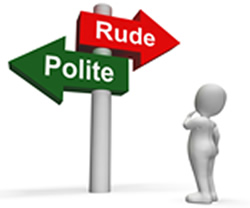Rewiring the Addictive Brain
In her latest publication, Rewiring the Addictive Brain, Dr. Laurel Parnell convincingly responds: combine EMDR to reprocess and clean things up and use resource tapping—a combination of positive imagery that activates positive resources internally and bilateral stimulation that serves to link this information together. Eye Movement Desensitization and Reprocessing (EMDR) is a powerful therapy for handling trauma (small and big).
Witness: A Civil War Experience From a Child’s Perspective
The story shares how, at eight years of age, Quanei Karmue was living the American Dream in the sun-swept country of Liberia. His father was away on an extended business trip to solidify the family’s fortune, and he and his siblings were left in the care of their mother, a respected nurse, pharmacist, and leader in their close-knit community, a suburb where all the women were called “Auntie” and all the men “Uncle.” As a curious child, Quanei thought he had perfected his stealth and spying skills. He was drawn to adult conversation — he knew that was where you learned what was really going on in the world.
Safety in Therapeutic Interactions: A Polyvagal Influence
My journey involves a deep and prolonged exploration of the Polyvagal theory (Porges, 2011). In my quest to understand when intimacy, emotional expression, and connected communication are possible, I delved deeply into Porges’ research with the vagus nerve and its role in the evolution of the nervous system. His insights provided a road map for me and my clients to a fuller emotional life as we connected with our interoceptive awareness of emotions that motivate our behavior, their influence on our relationships, and the conscious choices we have.
Wizardry in a Group: The Wisdom of Neural Co-Regulation
As a group therapist I witness member-to-member and member-to-leader interactions promote not only group cohesion but also psychosocial/emotional growth. By explaining how authentic face-to-face social interactions strengthen the functioning of the vagus system, improves social experience and tamps down sympathetic tone, the Polyvagal theory offers a glimpse into the somatic healing power of group dynamics.
It Takes Courage to Stay in the Shy Moments
By Hadi Bahlawan Marcher and Lene Wisbom
A man enters a party with many new faces; to join in, to connect with these unfamiliar faces,...
An Integrative Approach to Treating Babies and Children
Babies and children can often be our greatest teachers in life. They remind us of our deep human connection to each other and to the world. An Integrative Approach to Treating Babies and Children, edited by John Wilks, persuades us to listen to everyone’s own “baby history.”
In other words, Wilks has us look into the history of our birth in order to have a greater understanding of its effects on our adult life. Wilks suggests in the introduction that, “One of the major themes in this book is that it is much more important for us to create the right space in ourselves and in our clinic setting to work with babies rather than what we ‘do’ to a baby” (16).
Healing Adverse Early Experiences Moves Beyond “Keeping Score” In the Body
Early experiences that influence adult disease are not just in childhood; they begin in the womb. Our earliest pioneers of fetal origins of adult disease such as David Barker, MD, PhD and Peter Nathanielsz, PhD revealed that nutrition, geographic location, stress, and the environment all have an effect on the baby in the womb. The study of the baby’s experience of conception, pregnancy, birth and attachment also create patterns of distress that may last a lifetime. What do these patterns look and feel like? How can we help our babies and their families, and the professionals who support them?
What Happened to Tiger’s Mojo?
Kelly Mothner, PhD, explores Tiger Wood's precipitous fall from a mind-body connection, using current neuroscience to support her hypothesis that his decline is rooted in something more profound, more deep-seated, more subconscious. . Her perspective not only illuminates the underpinnings of his downfall, but it also holds the key to his recovery.
Corporeity in Psychotherapy
I wondered a few years ago how it might be possible that the fetus could know "the flavour of the relationship with the mother" while immersed in a liquid environment, given that the introduction of sweet substances into the amniotic fluid led to an increase in deglutition (swallowing), while the intro- duction of bitter substances led to a reduction.
I believe the answer lies in Ludwig Jacobson's (1813) vomeronasal organ, which is situated just above the incisors and is capable of transducing the aroma of substances in liquid solutions into taste in the embryonal-fetal period. This organ atrophies after birth, but, during our intrauterine time, it permits us to know the flavor of the primary object relationship, which is ‘a mirror taste’, which is to say that it already informs us of a primary intercorporeity that may prepare the ground for later subjectivity and intersubjectivity, and even psychopathology.
This sense of a primary intercorporeity lead me to consider corporeity’s place in general in psychotherapy and how it interacts with what I consider to be the two main ingredients in the psychotherapeutic setting, namely the relationship (between therapist and client) and therapeutic embodied activation.
What is Corporeity in Psychotherapy?
Transformative Moments: Short Stories from the Biodynamic Psychotherapy Room: Touch and Betrayal
From an object-subject relationship point of view, we should never underestimate how challenging it might be for a body-mind system that has been betrayed by humans to trust humans again—to trust the object ‘human’ and to authentically experience that this subject is safe.














